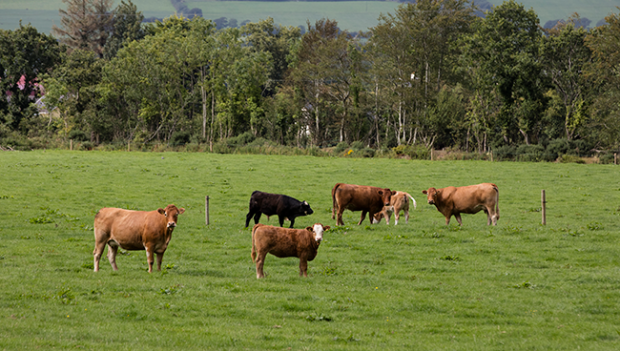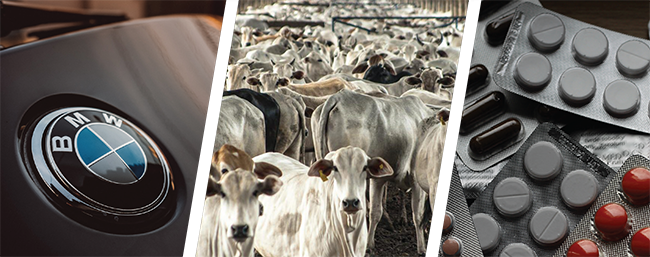19 August 2021 Edition
We must protect the Irish family farming model

In July, a deal was agreed on the new Common Agricultural Policy until 2027. For those unfamiliar with agriculture and CAP, there is sometimes a perception that farmers receive cheques from Europe to further boost healthy profit margins. Many would be shocked to learn that only one-third of Irish farms are regarded as financially viable.
In reality, the payments are compensation for the EU sacrificing the sector in order to protect more lucrative industries. The EU is committed to a neoliberal free trade agenda globally and trade means exchange.
If we are selling machinery, cars, and pharmaceuticals internationally, these countries want to send goods in our direction in return. For many countries, agricultural exports are a key industry and provide the best opportunity for trade expansion. A calculation has then been made that to allow these imports and also keep our own agricultural sector competitive is through direct financial support to farmers. Note the EU’s recent attempt to implement the Mercosur deal – BMWs on a boat to Brazil from Germany and 100,000 tons of cheap Brazilian beef returning to our supermarket shelves.
This system, though dysfunctional, at least held the prospect of affordable food prices for consumers and the protection of the sector. However, the method through which farmers gain supports will obviously result in intensification and market concentration.
In Ireland, farmers receive an amount of money per hectare of land. The average is in the region of €260. This amount varies as it was traditionally tied to how productive that piece of land was.
In 2003, the productive criteria was abolished, but they were allowed to keep their previous payment for that land. Today, this means some farmers may receive over €500 for a particular hectare of land while a neighbouring farmer receives €100. There is no rationality for continuing this inequity.
The land in Ireland varies in quality, having an impact on its capacity to be farmed. Farmers in the west and border region often farm poorer quality land and have generally ended up with small payments. Average family farm income in 2019 was highest in the South East at €36,659 and lowest in the Border region, where average farm incomes were less than one-third of that level, €11,107.
Unsurprisingly, these farmers are often forced to look for scarce off-farm income possibilities. Between sectors, there is also significant variation. Regional incomes differ to a great extent. Dairy farms are heavily concentrated on better land in the south of the country.
Those on meagre payments often leave farming as financially supporting a family is impossible. Large agricultural enterprises, with economies of scale, fill the gap these small farmers leave in the market.
This recipe is particularly dangerous when you consider its impact on climate change. The intensive model, like US style grassless feedlots, means more carbon emissions. Large farms cannot grow the grass needed to support their ballooning stock numbers and resort to importing animal feed from Brazil, destroying the rainforest in the process. This process prioritises quantity over quality and is negative for animal welfare. For the EU to permit such a direction of travel runs in complete contravention to the Green Deal.

• We are selling machinery, cars and pharmaceuticals internationally — these countries want to send goods in our direction and agricultural exports (like cheap Brazilian beef) provide the best opportunity for their trade expansion
Enter CAP reform. This new CAP offers an opportunity to reverse these trends. To end inequality between farmers and support small and medium farmers, who are being squeezed by this race to intensify. Sinn Féin’s number one priority is to see our family farming model saved and a complete convergence of the amounts received for each hectare. A farmer in Donegal must be equal to a farmer in Cork.
Amazingly, Ireland’s Agricultural Minister actively opposed this proposal at EU level. Despite data clearly stating that 60% of Irish farmers would benefit, the more powerful minority who gained from a continuation of inequality clearly had the Minister’s ear.
That opposition, alongside others, made full convergence of the amounts impossible. However, the European Parliament did manage to guarantee that no farmer would receive less than 85% of the average. Inversely, no farmer would receive more than 15% above the average.
Sinn Féin’s second priority was to ensure no single farmer was receiving over €60,000. Even if all farmers get the same amount per hectare, larger farmers will have hundreds of hectares and would receive much larger payments than the average farmer, who farms 30. This is EU taxpayer money and shouldn’t favour those already profitable. To date, EU policy has failed to address this. 80% of EU subsidies go to 20% of farmers.
Thirdly, we wanted to boost the payments to small and medium sized farmers by paying a higher rate for the first 20 hectares, and less for what they claim after that threshold. A farmer with 20 hectares may get €350-400 for each. The larger farmer will get the same payment for that first 20 but subsequently may only get €200. This is called the redistributive payment.
These proposals were again met with fierce opposition from national governments. Eventually, they agreed that a minimum of 10% of CAP funds would be set aside for redistributive payment. They also agreed that countries could reduce payments given to individual farmers over €60,000 by 85%. These measures represent significant progress from previous, but they can be improved.
Measures fall into two categories. The 85% convergence of payments is mandatory, with an option to increase. The same goes for the 10% redistributive payment. However, the reduction of payments over €60,000 is not mandatory. On the one hand, it means countries can do the bare minimum. On the other, it allows Sinn Féin to press the Irish Government to be more ambitious, as flexibility is enshrined.
Sinn Féin is taking on that challenge and is launching a campaign to ensure the Irish Government makes all per hectare payments 100% equal. 20% of our budget is ring fenced to help those small and medium farmers and we apply the maximum reduction to payments over €60,000.
As a left wing political party, Sinn Féin recognises this is a battle of class interests. Fine Gael and Fianna Fáil have lined up behind big Agribusiness who thirst for international expansion, regardless of social or environmental costs. Our vision for the sector prioritises the protection of grass-fed production, the underpinning of rural economies through support for family farms and a rebalancing of our relationship with nature.
We must protect the Irish family farming model to ensure a viable future for the next generation.
Sinn Féin’s priorities for greater CAP equity
- Raise convergence to 100% from the new minimum 85%
- Double the new mandatory front-loaded payment minimum from 10% to 20%
- Implement the maximum reduction on payments over €60,000
- Increase the minimum spend for young farmers in Pillar I from 3% to 4%
- Design Pillar I eco-schemes to be straightforward and profitable




